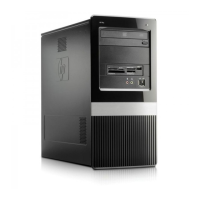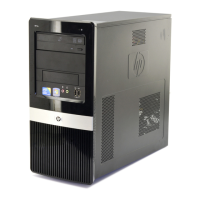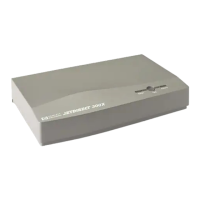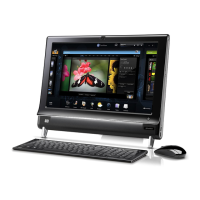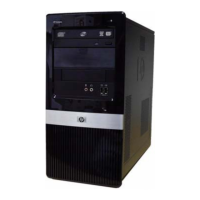For
HP
Internal Use Only
Access Port
General Description
The
Access
Port
is
located
on
the
Multifunction
I/0
card.
The
Integrated
Access
Port
is
designed for use
with
PA-RISC
HP-PB
I/0
base systems
to
provide a minimal level
of
remote
supportability for
the
systems.
The
Access
Port
gives
the
console
operator
the
ability
to
read
system
status
and
to
generate system resets
through
the
console
terminal
instead
of
through
the
system's front panel display
and
switches.
It
also provides
the
ability
to
connect a second
console
in
parallel with
the
local console terminal. This "mirrored" console
port
is connected
to
a modem
through
which
the
second
or
remote console is
attached.
This provides
the
same
system
support
functionality
to
a remote
terminal
as is available
to
a console
operator
sitting
next
to
the
system.
Access Port Operation
Local/Remote Console
The
I/0
card
provides
an
interface for
the
host based
PDC
and
card
based
IODC
or
the
operating
system's
I/0
driver
to
communicate
with
the
console
terminal
and
the
support
modem.
When
the
support
modem
is
not
being used for remote console
operation,
it
is
available for use by
the
host system.
When
it
is being used for remote console
operation,
the
modem
port
is connected
in
parallel
with
the
system's console
port,
making
it
unavailable for
use as
an
independent
terminal
connection.
Access Port Functions
The
Access
Port
may
be considered as a
type
of
support
server.
It
acts as
an
agent
to
pass
characters between
the
front plane
(terminal
input
and
output)
and
the
backplane
(the
host
system interface).
At
certain times,
the
Access
Port
may
be
given commands
to
suspend
character
transfer between host
and
terminals
to
allow
the
console
operator
to
interact
directly
with
the
Access
Port.
This gives
the
operator
the
ability
to
check
the
operating
status
of
the
host, enable or disable remote
operator
accesses, lock
the
remote
support
modem
for
increased system security, force a system reset,
or
to
initiate
a Transfer of Control
(TOC).
After
the
operator
completes Access
Port
related tasks, communication with
the
host
may
be
resumed
without
loss
of
data.
Access Port Modes
Terminal
ports
connected
to
the
Access
Port
may
be
in
one
of
three
modes:
Session Mode. Session mode is defined as a direct connection from
the
terminal
to
the
host
system
with
the
Access
Port
monitoring
but
not
acting on any characters
transmitted
between
the
terminal
and
the
host.
Console Mode. Console mode is defined as a connection
in
which
the
Access
Port
monitors
the
data
being transferred
and
will
take
special action on some characters.
Control Mode. Control mode is defined as a mode
in
which
the
terminal
is
in
communication
with
the
Access
Port
only,
Functional Description 9-5
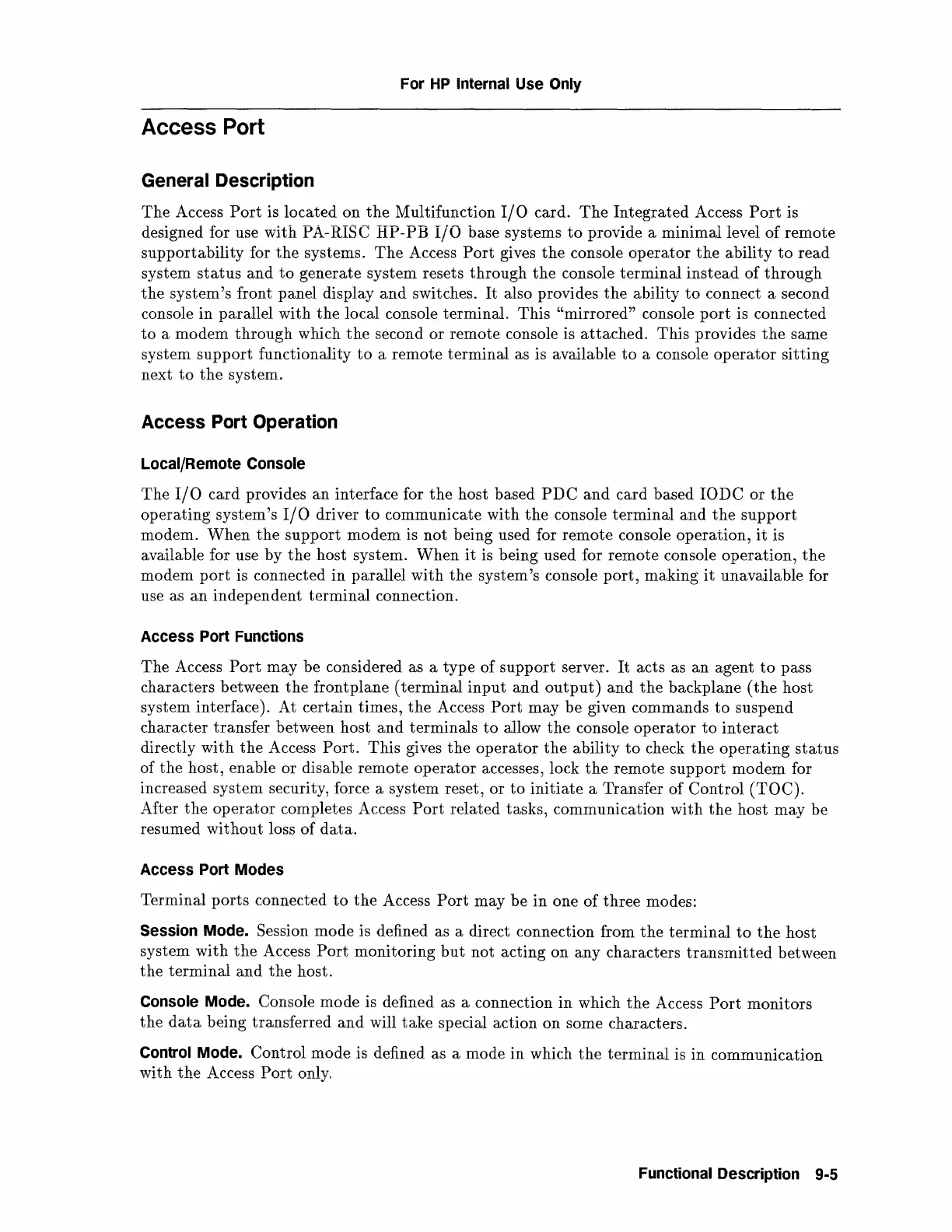